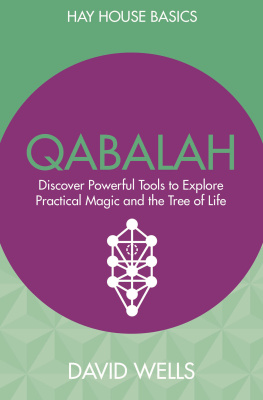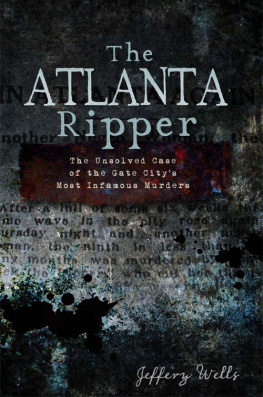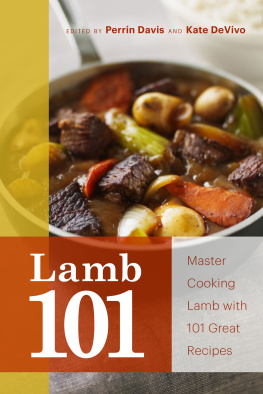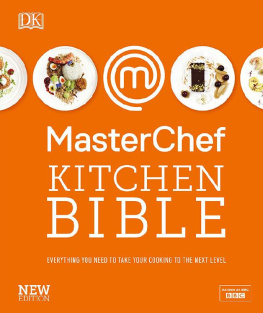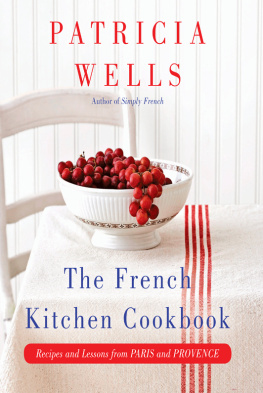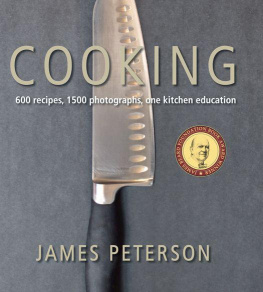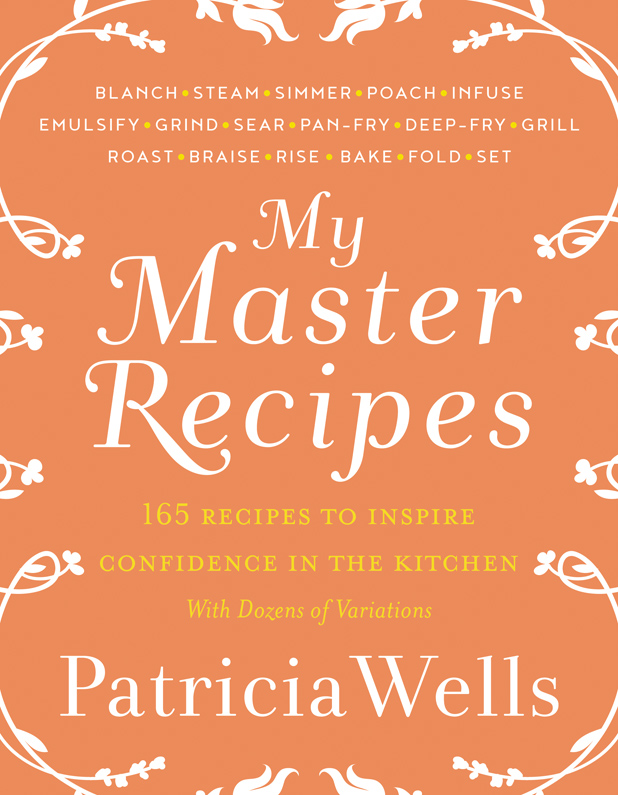As ever, for my husband,
Walter,
with gratitude for his love, dedication,
sharing, encouragement, and most of all,
for helping create such a perfect life!
And to Marc, Faye, and Marlow
for all their love and support, and for approaching all
recipe-tasting opportunities with never-ending gusto.
Contents

Guide

O n the last day of each week of the cooking classes I hold, both in Paris and Provence, I regularly hear students remark: Wow! I now have more confidence in the kitchen. Working toward that goal for all home cooks, My Master Recipes creates a framework for every cook to master fundamental techniques through various master recipes, securing a blueprint to expand and experiment with a whole new repertoire of recipes.
A friend who is a pianist told me that she perfected recipes the way she perfected pieces of music, repeating them over and over until she got it right. With this book, readers can perfect and experiment with particular techniques and recipes while they come to understand how they apply across a broader palette of recipes, expanding skills and increasing the joy of home cooking.
Simple but basic techniquesincluding blanching, steaming, simmering, poaching, infusing, emulsifying, grinding, searing, panfrying, deep-frying, grilling, roasting, braising, baking, folding, settingare the foundation of this book. Once a home cook clearly understands and masters each simple technique, confidence soars and calmness in the kitchen reigns. With what seems like the flick of a switch, some recipes can be flipped from sweet to savory and back again. Once the cook truly understands the principles behind the recipes, conscious, intelligent creativity can follow.
Once a cook has prepared the a foolproof recipe for homemade pizza, focaccia, and pinwheel breadsan entire repertoire of options becomes instantly available, opening up a new collection of specialties to bring to the table. No need to look elsewhere.
And theres an added advantage: Once proper equipment has been organizedramekins for the panna cotta, a baking stone or metal plate for the pizza, the right pan for searing, the porcelain baking dish for the frittata, a rectangular loaf pan for the nougat glac and semifreddokitchen items no longer have a single use, but can be relied upon endlessly.
Seasonality, the abundant use of fresh fruits, vegetables, zests, and herbs, substituting honey for sugar when possible, and olive oil for butter when it fits, are signatures of my very personal style of cooking and an integral part of My Master Recipes.
In this book, you will see an emphasis on a balance of flavors and texturesthe importance of acidity and crunch in a dish. As a cook decides to prepare a recipe, its best to imagine the finished version in ones mind: How will the flavors go together? Is there a balance of textures? Is it beautiful? Will a garnish of herbs add a sense of freshness and a welcome, essential burst of final color?
In some intriguing ways, this personal cookbook has influenced my cooking more than any of my other works. Thinking so systematically about the secrets to success and confidence in the kitchen has made me much more conscious of how I cook and why, and which techniques I use: why, how, and whether they really achieve the best results. I have also become acutely aware of the importance of keeping the kitchen as neat as humanly possible while cooking: One is calmer, there is less to clean up in the end, and there is a comforting reassurance that everything in life is almost in its place.
INGREDIENTS AND THEIR IMPORTANCE: A CASE FOR ORGANIC
I dont know any cook who disagrees with this credo: Without fresh, high-quality ingredients, one might as well forget cooking. In all the ingredients lists in these recipes, I try to steer the cook toward the finest. And although I do not insist in the ingredients list that every single ingredient be organic, in my own kitchen I use organic productsfruits, vegetables, grains, flours, poultry, meat, herbs, honey, wineabout 95 percent of the time. We are fortunate enough to have been able to transform our land in Provence from a mildew-ridden vineyard and a property without wildlife into an organic haven, growing organic grapes, olives, honey, figs, herbs, vegetables, and flowers, all of which attract birds, bees, butterflies, and insects that help make our little world a true sanctuary.
I do know that eating organic all the time is not realistic for many cooks. Cost is a huge factor, and so is availability. I find it useful to have a go-to list of what is best to buy organic and what is fine to buy non-organic when organizing my shopping.
A few rules of thumb: Citrus fruit is often heavily sprayed with pesticides, so if you are zesting the peel to use in a recipe, go organic. If you are using just the juice or flesh, the thick skin barrier protects the interior, so non-organic is fine.
Most tropical fruits, especially those with thick, hardy skins, resist pesticides fairly well, so a non-organic choice is fine.
The Environmental Working Group (EWG) in Washington, D.C., has conducted extensive tests on pesticide residues on fruits and vegetables and publishes an annual list of the Dirty Dozen items to buy organic and a Clean Fifteen list of items that are safer to buy as conventional produce. I find these lists to be a very useful tool. (See www.ewg.org.)
The Dirty Dozen: Insist Upon Organic When Possible
Apples
Celery
Cherries
Cherry Tomatoes
Cucumbers
Grapes
Nectarines
Peaches
Strawberries
Spinach
Sweet Bell Peppers
Tomatoes
The Clean Fifteen: Non-Organic Is Okay
Asparagus
Avocados
Cabbage
Cantaloupe
Cauliflower
Eggplant
Grapefruit
Honeydew Melon
Kiwi
Mangoes
Onions
Papayas
Pineapples
Sweet Corn
Sweet Peas (frozen)
For ingredients other than produce, I do make an effort to make sustainable and ethical choices, choosing cage-free eggs, meat, and poultry fed a traditional diet for its species (grass-fed beef and grain-fed poultry).
Like most attentive cooks, I favor specific brands or varietiesmustard, nut oils, canned tomatoes, soy sauce, peppercornsfor I find that their top quality can make a difference in the final effort. I have included my preferred list at the .
MY GOAL FOR EVERY COOK
For some reason (perhaps the influence of my mother, who I always saw as a fearless cook) I have always been confident in the kitchen. Except for one weekend when Jol and Janine Robuchon spent several days with us in Provence after having worked together on the cookbook Simply French. They had visited us many times, but previously Jol and I had always cooked his food. Now that the book was completed we were just going to spend a friendly weekend together. But when I realized I was going to cook my food for him I felt a sudden panic, and for a moment I lost that confidence that had always come so naturally to me. But when he declared that my fish and fennel soup was an inspiration to him, I breathed a huge sigh of relief and all confidence returned.



